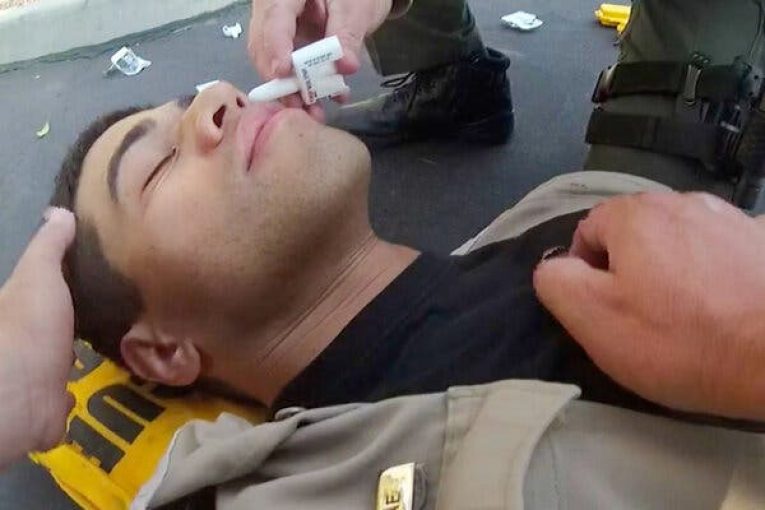

By Ankita Joshi
SAN DIEGO, CA – The San Diego County Sheriff’s Department released a public safety video last week after a deputy was allegedly exposed to fentanyl and nearly died from an overdose.
However, the video has received heavy criticism from medical experts who have said that it is impossible to overdose on fentanyl simply from exposure.
The video released shows body cam footage of Deputy David Faiivae collapsing after handling a white powder.
 Soon after the Deputy Faiivae collapsed, he was given doses of Narcan by Corporal Scott Crane, but when he failed to respond, he was taken to the hospital where he eventually recovered.
Soon after the Deputy Faiivae collapsed, he was given doses of Narcan by Corporal Scott Crane, but when he failed to respond, he was taken to the hospital where he eventually recovered.
In their original press release, the Sheriff’s Department stated, “Fentanyl continues to be one of the greatest threats facing San Diego County and the nation. This synthetic opioid is 50 times more potent than heroin. Just a few grains of fentanyl can be absorbed through the body and lead to respiratory failure and even death.”
The department followed this statement by emphasizing the importance for all police officers to carry naloxone, as the department has been doing since 2014.
In addition to the public safety video, flyers on the danger of fentanyl were also released.
However, because of the backlash and criticism, the SDCSD released an update on this week with lab results, incident reports, and the computer-aided dispatch report from the incident. The unedited body worn camera from the incident will also be released later this week.
The incident report notes that “Deputy Faiivae lost consciousness and sustained an injury to his head during the fall” after possibly being exposed to Fentanyl.
Deputy Faiivae was then treated for a head injury, and “possible Fentanyl (opioid) exposure.”
It was also noted that “the bag was exposed to open air near all deputies who responded.”
Additionally, the lab results found the white powder found to be positive for methamphetamine, fentanyl, and fluorofentanyl.
Regardless of this update, the criticism has only increased about the real reason behind Deputy Faiivae’s hospitalization.
Medical experts have expressed disbelief and panic over the negative effects the video and message could have on the opioid crisis.
NBC News quoted a physician who raised serious doubts about the scenario.
“We have a lot of scientific evidence and a good knowledge of chemical laws and the way that these drugs work that says this is impossible,” said Ryan Marino, medical director for toxicology and addiction at University Hospitals in Cleveland.
“You can’t just touch fentanyl and overdose,” he said. “It doesn’t just get into the air and make people overdose.”
But that hasn’t stopped other departments from jumping on board.
Yesterday Clovis Police put out a press release claiming that a police officer was transported to the hospital after fentanyl exposure.
In that incident the officers after taking control of the drug in a paper bag and securing it in the patrol car claimed that they “began to have shortness of breath and elevated heart rate.”
They stopped their vehicle and paramedics were dispatched and treated both.

